8+ Appositive Phrase Examples to Download
Writers, like myself, can provide extra information through the use of various writing techniques. One of these techniques manifests as the utilization of appositive phrases and nouns.
1. Appositive Phrase Template
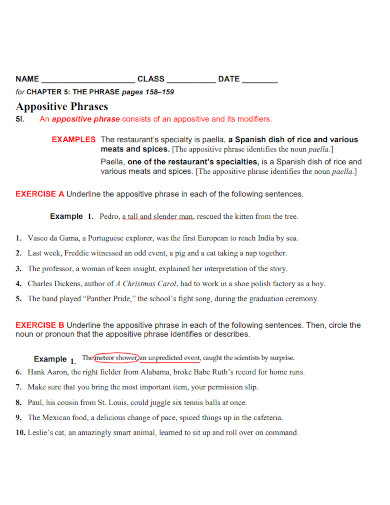
panthercountry.org
2. Appositive Phrase Example
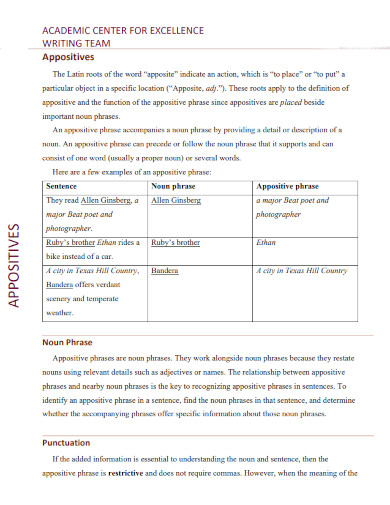
tamiu.edu
3. Appositives and Appositive Phrases
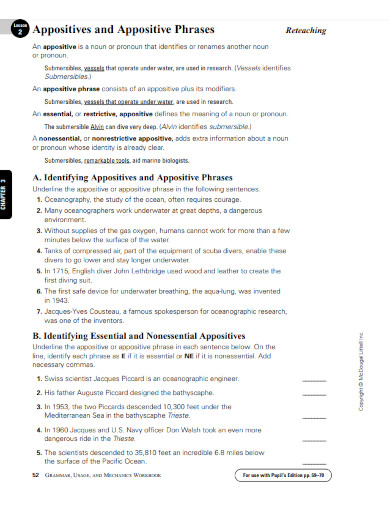
s3.amazonaws.com
4. Appositive Phrases Eacher
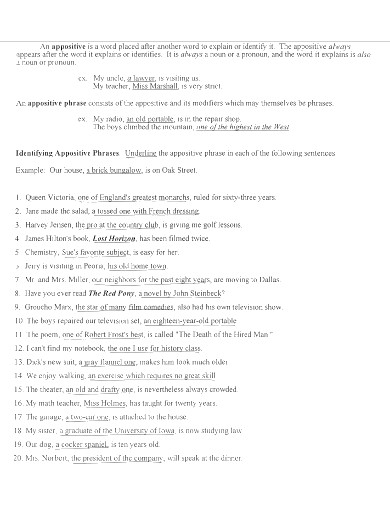
livingston.org
5. Prepositional, Verbal, and Appositive Phrases
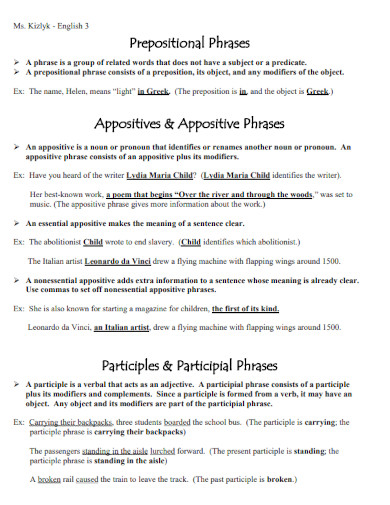
lewispalmer.org
6. More Appositive Practice
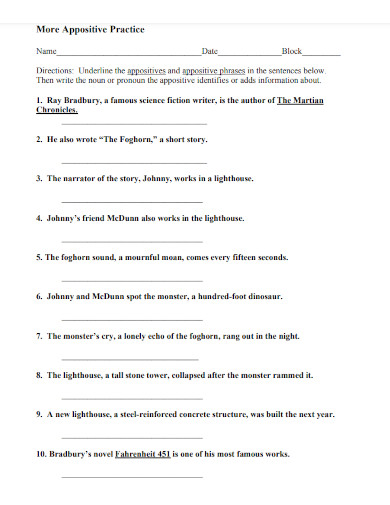
warrenhills.org
7. Appositive Phrases Name

texasdeafed.org
8. Appositive Phrases Practice Exercise
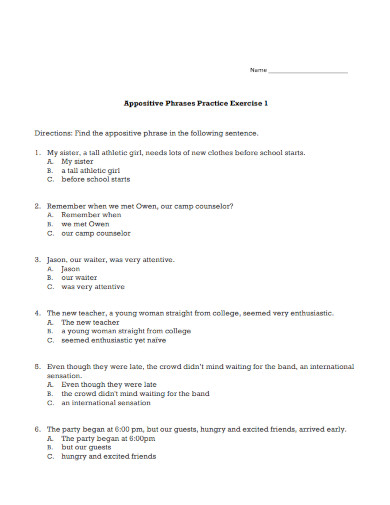
uploads-ssl.webflow.com
9. Appositive Phrases Subordination Techniques
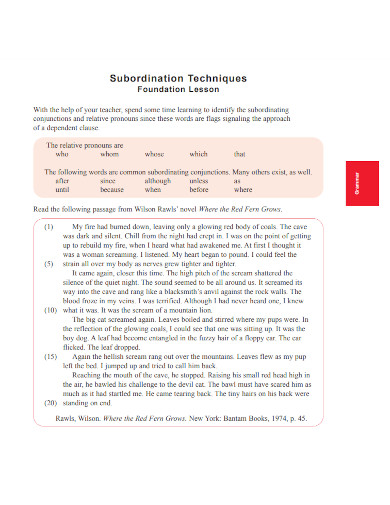
montgomery.kyschools.us
What Is an Appositive Phrase
Appositive phrases are optional parts of a sentence or independent clauses that will provide extra bits of information that would otherwise take another sentence to relay. If you want a more in-depth look and a good reference, you may use the appositive phrase templates, examples of appositive phrases, and appositive phrase examples.
How to Use Appositive Phrases
Appositive phrases have many practical uses that range from authors writing books like biographies and autobiographies, and researchers’ quantitative (see surveys and survey questions), and qualitative research articles. Many people use these phrases to provide additional information and context for their readers to obtain a more cohesive and nuanced theme and tone.
1.) Select a Noun to Elaborate
Begin by selecting a common noun or proper noun you want to elaborate on or provide context. The placement of the appositive phrase will dictate both the content and the format of the appositive phrase. Using a sample sentence of “Alexa is making videos for her job.” we want to elaborate on the noun, Alexa.
2.) Write or Insert the Appositive Phrase
After you have chosen the noun to elaborate on, you will now write and insert said appositive phrase beside the noun. The usual format of an appositive phrase is (a general or proper noun, proper noun, or title). Using the example above we should write something that would elaborate on the information about Alexa; we can do this by writing the appositive phrase “my seatmate” and inserting said phrase beside the noun, Alexa.
3.) Use the Appropriate Symbol to Sperate the Appositive Phrase
When you have finished writing and inserting the appositive phrase, you will need to use the appropriate symbol to separate the phrase and the noun. These symbols include em dashes (-), parentheses [()], and commas (,). If we use the example, we can use either a closed parenthesis or a comma to separate the appositive phrase. We will end up with a sentence that will look like this “Alexa, my seatmate, is making videos for her job.”
4.) Repeat Steps 1 to 3, Until Satisfied or Finished
After you have finished steps 1 to 3, you may repeat said steps until you are satisfied with the results. Just note that appositive phrases are optional, and overuse of said phrases may end with confusing and dull text.
FAQs
Why do I need to use an appositive comma?
The appositive phrase requires a comma preceding and proceeding the phrase to separate it from the overall statement. The appositive phrase requires this rule due to it being an optional part of the statement. The optional part of the appositive phrase means that the writer can take out the appositive phrase, and it will not affect the statement in any way, shape, or form. For example, in the sentence “Ms. Mary, the current manager of the team, asked if we can print these documents for her.” we can remove the appositive phrase to form a sensible and valid sentence. “Ms. Mary asked if we can print these documents for her.”
What is the importance of an appositive phrase?
The appositive phrase is an optional phrase or statement that a writer can add to sentences to provide additional context and information. The writer may not be able to provide the context or information without the use of an appositive phrase, thus cementing the importance of the appositive phrase. But this does not mean that the writer should always use appositive phrases to introduce context or information, as overuse of this technique may make the text or story bland.
How do you identify appositive phrases?
You can easily identify appositive phrases by their need for appositive commas. Not only that, but appositive phrases are also statements that only provide further information and context to the overall meaning of the statement. Begin by searching for appositive commas, and try to isolate the phrase surrounded by the commas. If the statement is an independent clause and is a valid sentence, then you have successfully identified and isolated the appositive phrase.
Appositive phrases are short phrases or statements that have two commas before and after the phrase. Using appositive phrases in your sentences can improve the reader’s comprehension and understanding of the text. In conclusion, well-used and well-paced appositive phrases can improve the overall quality of the text.

